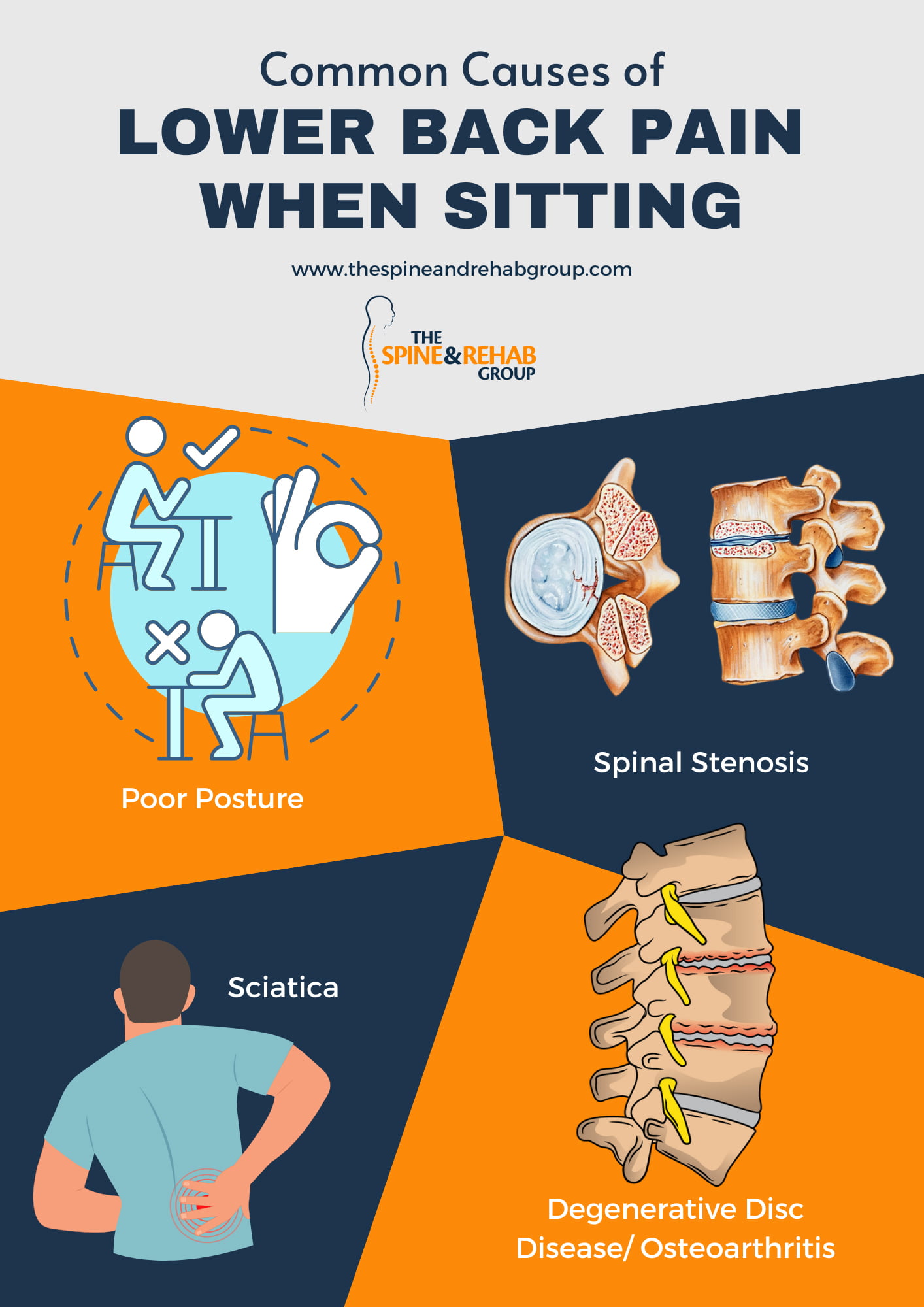 OUR LOCATIONS
Same-day Appointments Book OnlineCall to book 201.523.9590
OUR LOCATIONS
Same-day Appointments Book OnlineCall to book 201.523.9590
 OUR LOCATIONS
Same-day Appointments Book OnlineCall to book 201.523.9590
OUR LOCATIONS
Same-day Appointments Book OnlineCall to book 201.523.9590

Lower back pain has become a huge problem among adults — it’s one of the top causes of disability worldwide. The pain can impact your ability to work, and may even make sitting and standing difficult. Most patients complain not just about the pain, but also about the limited range of motion.
So how exactly does lower back pain when sitting happen? It can be caused by a variety of different issues, from poor posture to underlying medical conditions. There are also many home remedies and non-surgical treatments that are available to attain long-term relief.
About 4 out of 5 adults experience lower back pain when sitting. The pain ranges from dull to overwhelmingly sharp. Many adults spend around 8 hours a day hunched over a desk, so the number isn’t too surprising. However, lower back pain can be prevented by addressing ergonomic issues and making lifestyle changes.
There’s no singular cause for lower back pain. Some people may develop it after an accident or from heavy trauma. Others may have an underlying condition, such as sciatica or spinal stenosis. Sciatica occurs when a nerve is pinched along the back, leading to a persistent aching sensation around the area. Spinal stenosis happens when the spinal cord gets squeezed, leading to pain and weakness.
Another common culprit for lower back pain is poor posture. Slouching can cause stress to the back muscles. If you have existing back pain, poor posture can exacerbate the issue. Living a sedentary lifestyle can also make it more likely to develop lower back pain.
Pinpointing the cause of your lower back pain can be a lengthy process. If it’s suspected to be an underlying medical condition, you’ll need to undergo a physical examination and a series of imaging tests. X-rays and CT scans can determine the location of slipped discs. Nerve tests can also be used to check for sciatica and other nerve problems.
The most effective way to get rid of lower back pain is to improve your sitting posture. Staying too long in a single position can lead to tension around the muscles. When sitting, it’s important to do so by imagining a straight line along the length of your back. Visualize it protruding out of your head and going up to the roof. This will help you imagine the appropriate alignment of the body.
Make sure to keep your shoulders in a level position and avoid rotating your groin area forward. Movements like these can lead to a curve in the lower back. When you sit up straight, you should feel a stretch in the small of your back.
If you have frequent lower back pains, there are non-surgical treatments that you can look into for long-term relief. Make sure to undergo these procedures in a credible pain clinic, with the supervision of capable specialists. Each of these treatments is minimally invasive and comes with no long-term side effects.
The Spine and Rehab Group is a great place to start, considering its impressive track record and a team of doctors. They adopt a multi-disciplinary approach with their clients, carefully choosing from treatments like acupuncture and physical therapy.
Acupuncture is a popular form of Chinese medicine used to treat pain in the body. The procedure works by inserting fine needles directly into trigger points under the skin. Despite the sharpness of the needles, the procedure is relatively painful.
Each needle is only around 0.5 to 2.5 inches long. To help minimize pain, the needles stimulate endorphin release to counteract the body’s pain responses. Your acupuncturist will target multiple trigger points to maximize the effects.
Medical massage therapy involves manual manipulation of the lower back muscles. It’s a component of many physical therapy plans, but therapists can use it on its own to resolve pain in the lower back. The massages aim to relieve tension and tightness around the lower back. These may be done over multiple sessions for maximum relief. Much like acupuncture, the massage releases endorphins to promote relaxation.
Physical therapy is a popular non-surgical treatment for chronic pain relief. Physical therapists work directly with you and your doctor to come up with a treatment plan for your issues. The plan may incorporate patient education, core exercises, and massages. A treatment cycle can last anywhere from a few weeks to years, depending on the severity of the issue.
During your treatment, you can expect discussions about the causes of your pain. These will be addressed through exercises and other lifestyle changes. If you’re working for long hours of the day, your therapist may ask you to incorporate hourly stretches into your routine. You’ll be taught at-home exercises to help facilitate healing.
Your physical therapist may also use medical massages to promote relaxation. The massages use direct spinal and tissue manipulation to relieve deep-seated tension in the lower back muscles. Manual therapy may be done only in specific cases, as some patients may have highly sensitive muscles. But if effective, you’ll be taught techniques that you can apply at home for faster relief.

When dealing with lower back pain, it’s important to have a treatment plan that caters to your treatment goals. You may explore acupuncture or physical therapy depending on your convenience and preference. There are also steroid injections, electrodiagnostic medicine, and interventional therapies available at The Spine and Rehab Group. Whatever your choice, our team of licensed therapists and doctors can assist you throughout your recovery.
We’ve served thousands of clients in New York and New Jersey. Over the years, we’ve received positive testimonials and 5-star reviews. Our group is also a 7-time recipient of the Castle Connolly’s Top Doctors distinction. For more information about our treatments, you may visit our website or dial 833-847-7463 for appointments.



